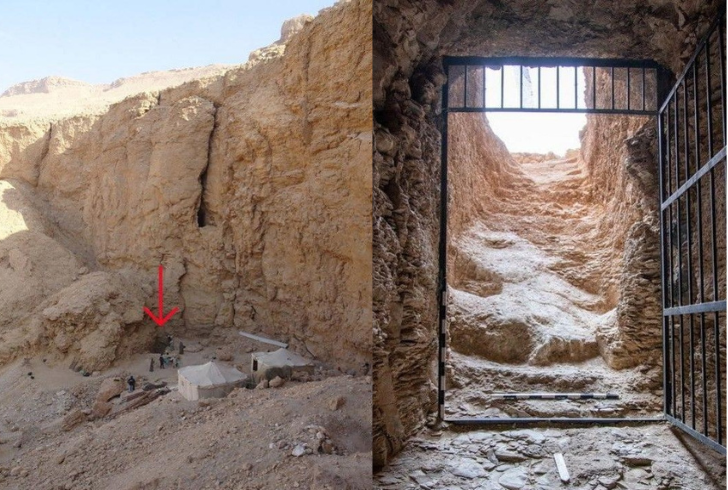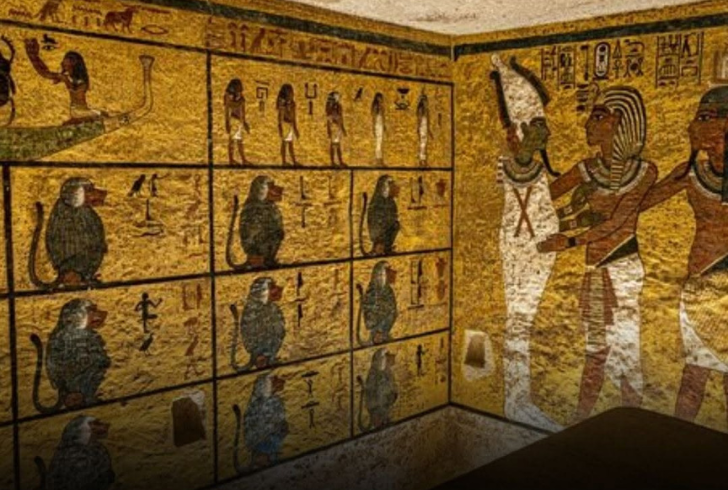Egyptian archaeologists have uncovered the long-lost tomb of Pharaoh Thutmose II, solving a mystery that has puzzled historians for centuries. The Egyptian antiquities ministry announced the discovery, calling it one of the most significant findings in recent history.
The tomb, located west of the Valley of the Kings, sheds new light on a king who ruled during one of ancient Egypt’s most prosperous eras.
A Pharaoh’s Missing Tomb Finally Discovered
Thutmose II, a ruler of the 18th dynasty in the 15th century B.C., was the husband of Queen Hatshepsut, one of Egypt’s most powerful pharaohs. Despite his significance, his tomb had remained undiscovered, leaving historians with a gap in their understanding of his reign. His mummy, found in the 19th century among a collection of royal remains, provided some insights. However, the location of his burial site remained unknown—until now.

Instagram | egyptomuseum | Archaeologists uncover the lost tomb of Pharaoh Thutmose II after years of mystery.
A team of British and Egyptian archaeologists first uncovered the tomb's entrance in 2022. Initially, they believed it belonged to a royal wife. However, after further excavation, they identified it as the burial site of Thutmose II. The discovery is particularly intriguing because the area was previously associated only with royal women.
A Landmark Archaeological Achievement
Experts have hailed the discovery as one of the most important in recent years. Mohamed Ismail, secretary-general of Egypt’s Supreme Council of Antiquities, emphasized its significance. He compared it to the 1922 discovery of King Tutankhamun’s tomb, stating that it adds an "invaluable chapter" to Egypt’s history.
Artifacts found within the tomb, including fragments of alabaster jars and funerary furniture, provide critical clues about the burial. Archaeologist Piers Litherland, the mission’s field director, explained that the team spent months clearing debris to reach the main chamber. He described the moment as "emotionally turbulent," as the team had not expected such a groundbreaking find.
A Tomb Built Beneath a Waterfall
The tomb’s location and condition offer more fascinating insights. Built under a waterfall, it suffered significant flooding shortly after the king’s burial. To protect his remains, ancient Egyptians moved them to a secondary tomb, which experts now believe remains intact. Litherland explained that the discovery of broken alabaster jar fragments helped confirm the tomb’s ownership.

Instagram | etribune | This discovery sparks global interest in Egypt’s history and attracts more tourists.
"Thankfully, they broke one or two things," Litherland noted, "because that’s how we identified whose tomb it was." The inscriptions on these fragments led to the conclusion that the burial site belonged to Thutmose II.
What Comes Next for Archaeologists?
With this discovery, researchers now aim to locate the second tomb where Thutmose II’s remains were moved. Experts believe it lies beneath 80 feet of rock and limestone plaster, making excavation difficult but not impossible. If found intact, it could become only the second fully preserved royal tomb ever discovered.
Egyptian officials hope this discovery will renew global interest in Egypt’s rich history and boost tourism. The country has long relied on its ancient sites to attract visitors, and new findings continue to capture the world’s imagination.
This remarkable discovery not only fills a historical gap but also offers a glimpse into the grand burial traditions of ancient Egypt. As excavation continues, researchers anticipate even more revelations that will deepen our understanding of one of history’s most fascinating civilizations.
